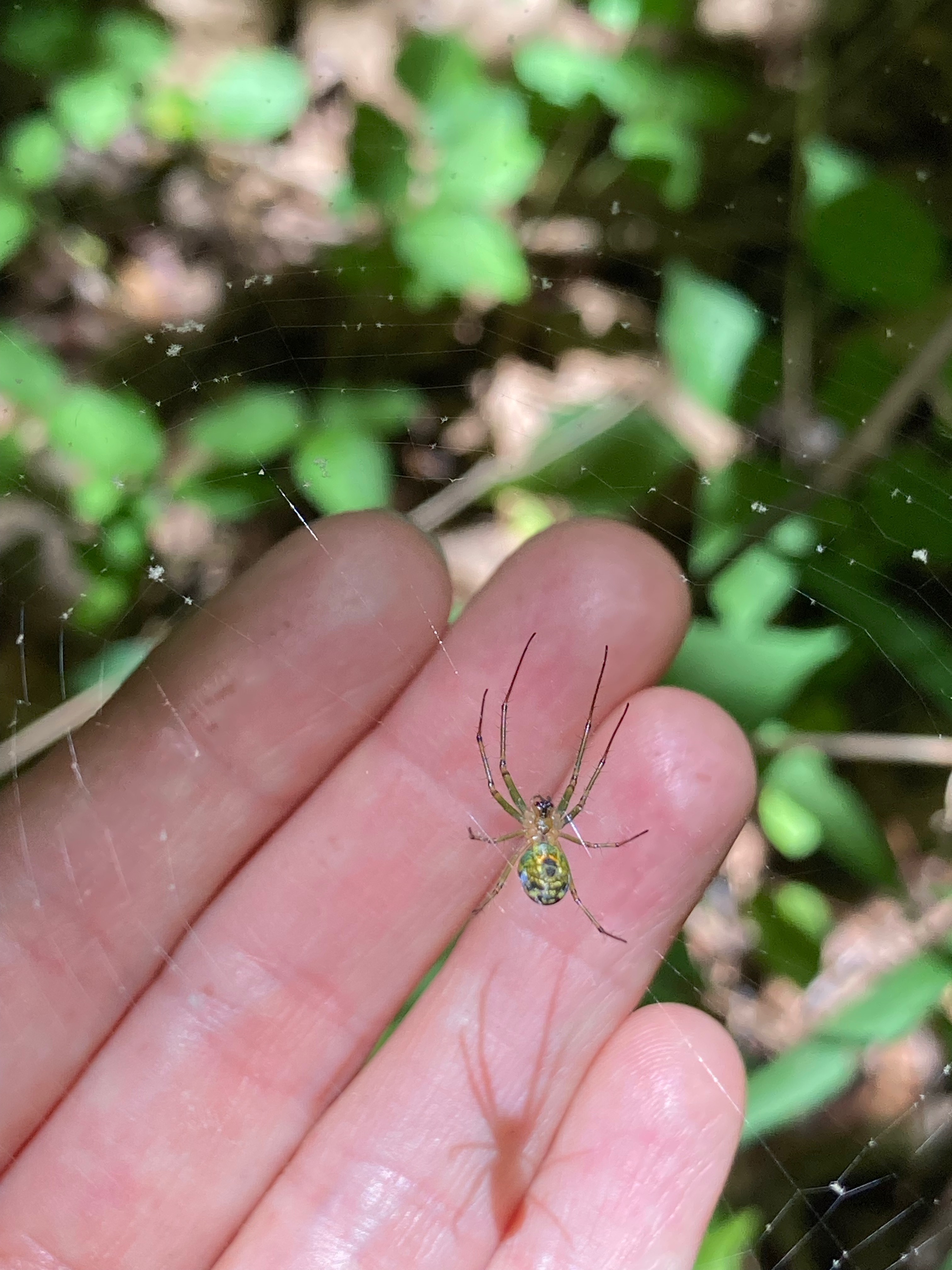New Study Reveals That Tree Species Diversity Increases Spider Density
The link between tree diversity and spider populations can help homeowners and other land managers better plan tree plantings to naturally mitigate the effects of climate change.
Spiders are often maligned for being creepy critters, but they are some of the most environmentally friendly pest regulators. Because they actively feed on flies, moths, mosquitoes and roaches, spiders eliminate parasites and many other vectors of disease—protecting both humans and plants from harm.

A new University of Maryland-led study published online in the journal Ecology found one simple way to take advantage of this natural ecosystem service: give tree-dwelling spiders a more diverse habitat.
“We found that there’s a strong link between the species diversity of tree habitats and the population density of the spiders that live in them,” said Karin Burghardt, senior author of the study and assistant professor of entomology at UMD. “Spiders really like complex habitats, so having a large variety of tree species with different structural features like height, canopy cover and foliage density will help increase spider abundance and also the natural pest regulation they provide.”
The study is part of the ‘BiodiversiTREE’ project, a series of large-scale, long-term experiments aimed at restoring diverse coastal forests along compromised shorelines of the Chesapeake Bay. Conducted by the Smithsonian Environmental Research Center and collaborators from institutions like UMD, BiodiversiTree investigates the role of tree species diversity in forest responses to climate change from the molecular to the watershed level.
“There have been some large-scale tree diversity experiments conducted in Europe and Asia, but our study is one of only a handful of experiments of its kind in temperate North America,” Burghardt said. “With this research, we’re discovering crucial information about our local ecosystems, especially regarding how they react to both climate change and restoration efforts.”
The forest plots were planted in 2013 at the Smithsonian Environmental Research Center, where 75 plots of formerly agricultural land were reforested with 16 tree species native to Maryland (including white oak, red maple and black gum trees). Each plot measured 35 square meters and contained 255 trees. On the plots, the researchers planted the same tree species or four or 12 different tree species.
Burghardt’s team began the spider study in 2019. After repeatedly sampling 540 trees in these plots by counting the number of spiders found in each tree, Burghardt and her team found that plots with higher tree species diversity also hosted greater spider populations. By the end of the project in 2021, plots containing four or 12 different tree species supported approximately 23% to 50% more spiders than single species plots, due to their cooler, shadier conditions.
“Plots with more variation in tree species tend to have more canopy cover than plots with only a single tree species,” Burghardt explained. “More canopy cover and tree shade may mean more water retention, cooler temperatures, additional hiding spaces from predators and better web-making environments for spiders—all features that influence spider distribution.”
The researchers found the strongest relationship between tree diversity and spider populations during the late summer months when average temperatures were at their highest. Spider populations in the diverse plots increased more dramatically than those in the single species plots during late August, which could partially be due to spiders’ extreme sensitivity to heat.
“Spider development time and reproduction is strongly influenced by changes in temperature,” Burghardt explained. “In addition, the summer months are also when their prey, insect herbivores, are the most active. This means maintaining certain microclimate conditions is essential to helping to maintain spider population levels and their natural pest control services, which allow managers to minimize the use of toxic chemical pesticides.”
As average temperatures continue to rise due to climate change, populations of tree-feeding insect pests and occurrences of deadly diseases transmitted by pests like mosquitoes and ticks will likely also steadily increase. Designing landscapes that support spiders and other beneficial bugs can offer economically and environmentally sustainable ways to counter this trend. With the results of this study, Burghardt and her team hope to inform stakeholders that land management decisions like tree planting can help keep ecosystems healthy and balanced.
“Overall, the diversity effect seems to be strengthening as our experiment ages,” Burghardt said. “Tree planting initiatives can be used as strategic responses to changes in our local ecosystems, but they can also be proactive maneuvers. Research like this will help us plan more resilient forests for the future.”
###
Other UMD co-authors on the paper include lead author Elizabeth Butz (B.S. ’21, environmental science and policy) and postdoctoral associate Lauren Schmitt.
The research paper, “Positive tree diversity effects on arboreal spider abundance are tied to canopy cover in a forest experiment,” was published online in the scientific journal Ecology.
This research was supported by the National Science Foundation’s (NSF) Division of Environmental Biology (Award Nos. 2044361, 2044406 and 2106014), NSF Research Experiences for Undergraduates (Award Nos.1659668 and 1950656) and the U.S. Department of Agriculture (Award Nos. MD-ENTM-19932 and MD-ENTM-19001). This article does not necessarily reflect the views of these organizations.







